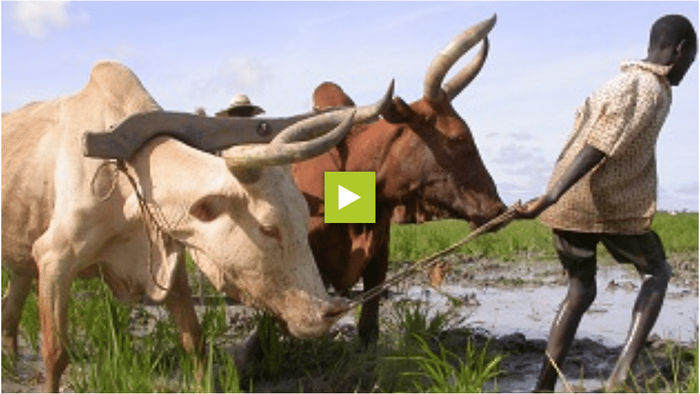Preparing and levelling your land twice will help your field to be good and healthy. This will improve your harvest.
In a field which is not levelled more weeds appear on the higher parts and you have to wait longer on the lowered parts, before you can start transplanting. Old seedlings tiller more poorly and the yield is less. On a uneven field, the mineral fertilizer sits on the deep spots and the rice is going to be uneven as well. The rice on higher parts ripe earlier than plants on deeper parts.
Preparing rice fields
A good land preparation will loose up the soil and makes it easier to irrigate and to drain. It allows absorbing fertilizer easily. Furthermore, irrigation water spreads evenly, when the field is levelled.
Clean your field and cut the smaller weeds and crop residues. Then spread them across the field. To make the soil more soft, flood two times in two to three days.
You do the first ploughing a few weeks before sowing or transplanting, so the weeds and crop residues can decompose. Plough with a hoe, a power tiller or a animal-drawn plough. This will turn and loose the soil. Take straw and other plant residues to decompose. Break soil clods and let water sink deeply in the soil.
Flood the field two centimetres deep for two to three weeks. This will drown insects, pests and decompose plant residues. It also makes weeds sprout or rot. After watering the field, you should add mineral and organic fertilizer. Organic fertilizers can be domestic waste, manure and compost. If you use more of organic alternatives you need less mineral fertilizer.
With a second land preparation you turn the soil, kill weeds and distribute nutrients. Therefore plough 10 to 15 centimetres deep. If you plough less, it won‘t help your plants to grow. But if you plough more, the fertilizer could be deeper than the plants roots.



















